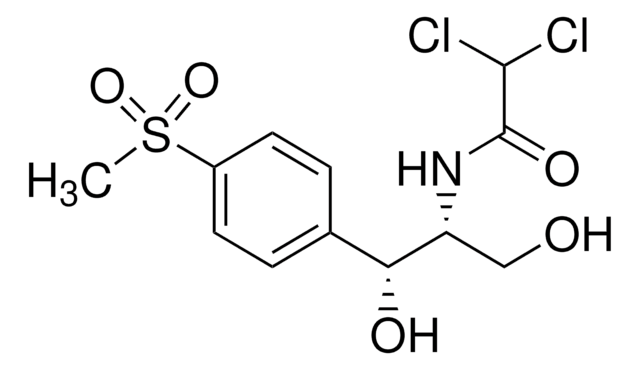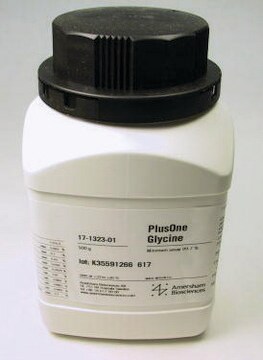G5417
Glycine
Fabrication pharma
Synonyme(s) :
Acide aminoacétique, Acide aminoéthanoïque, Glycocolle
About This Item
Produits recommandés
Source biologique
non-animal source
Niveau de qualité
Pureté
≥98.5%
Forme
crystalline powder
Technique(s)
cell culture | mammalian: suitable
Impuretés
endotoxin, heavy metals, trace metals, residual solvents, tested
pH
5.9-6.4
pKa (25 °C)
(1) 2.35, (2) 9.60
2.35
Pf
240 °C (dec.) (lit.)
Solubilité
H2O: 100 mg/mL
Absorption UV
λ: 260 nm Amax: ≤0.04
λ: 260 nm Amax: -0.006
λ: 280 nm Amax: ≤0.04
λ: 280 nm Amax: -0.003
Adéquation
suitable for manufacturing use
Application(s)
pharmaceutical (small molecule)
Activité étrangère
cytotoxicity, tested
Chaîne SMILES
NCC(O)=O
InChI
1S/C2H5NO2/c3-1-2(4)5/h1,3H2,(H,4,5)
Clé InChI
DHMQDGOQFOQNFH-UHFFFAOYSA-N
Informations sur le gène
rat ... Grin2a(24409)
Vous recherchez des produits similaires ? Visite Guide de comparaison des produits
Description générale
M-Clarity Program
Our comprehensive portfolio of upstream process chemicals not only provides biopharmaceutical manufacturers with high-quality raw materials for production of classical and novel therapies, but also helps them get to market faster and simplify regulatory challenges. Trust us to deliver supply chain transparency and reliable sourcing around the globe, streamlining your product qualification with best-in-class regulatory support and service.
Application
Actions biochimiques/physiologiques
Informations légales
Code de la classe de stockage
13 - Non Combustible Solids
Classe de danger pour l'eau (WGK)
WGK 1
Équipement de protection individuelle
Eyeshields, Gloves, type N95 (US)
Certificats d'analyse (COA)
Recherchez un Certificats d'analyse (COA) en saisissant le numéro de lot du produit. Les numéros de lot figurent sur l'étiquette du produit après les mots "Lot" ou "Batch".
Déjà en possession de ce produit ?
Retrouvez la documentation relative aux produits que vous avez récemment achetés dans la Bibliothèque de documents.
Les clients ont également consulté
Notre équipe de scientifiques dispose d'une expérience dans tous les secteurs de la recherche, notamment en sciences de la vie, science des matériaux, synthèse chimique, chromatographie, analyse et dans de nombreux autres domaines..
Contacter notre Service technique





